If you are into the digital industry, you might have heard the word Schema Markup or Schema.org. But are you fully aware of the meaning behind this word and the use of it in SEO? If not, you might be interested in learning more about the WordPress schema markup. Then you are at the right place. Today, in this article we will learn what schema markup is how to add WordPress schema markup, and different types of schema markup such as organization schema markup, local business schema markup, product schema markup, and many more.
What is Schema Markup?
Schema markup, or structured data, is a search engine language with a unique semantic vocabulary. Its code clarifies information to search engines so they can understand your content. This, in turn, helps users provide better and more accurate information in the structured snippets that appear below the page title.
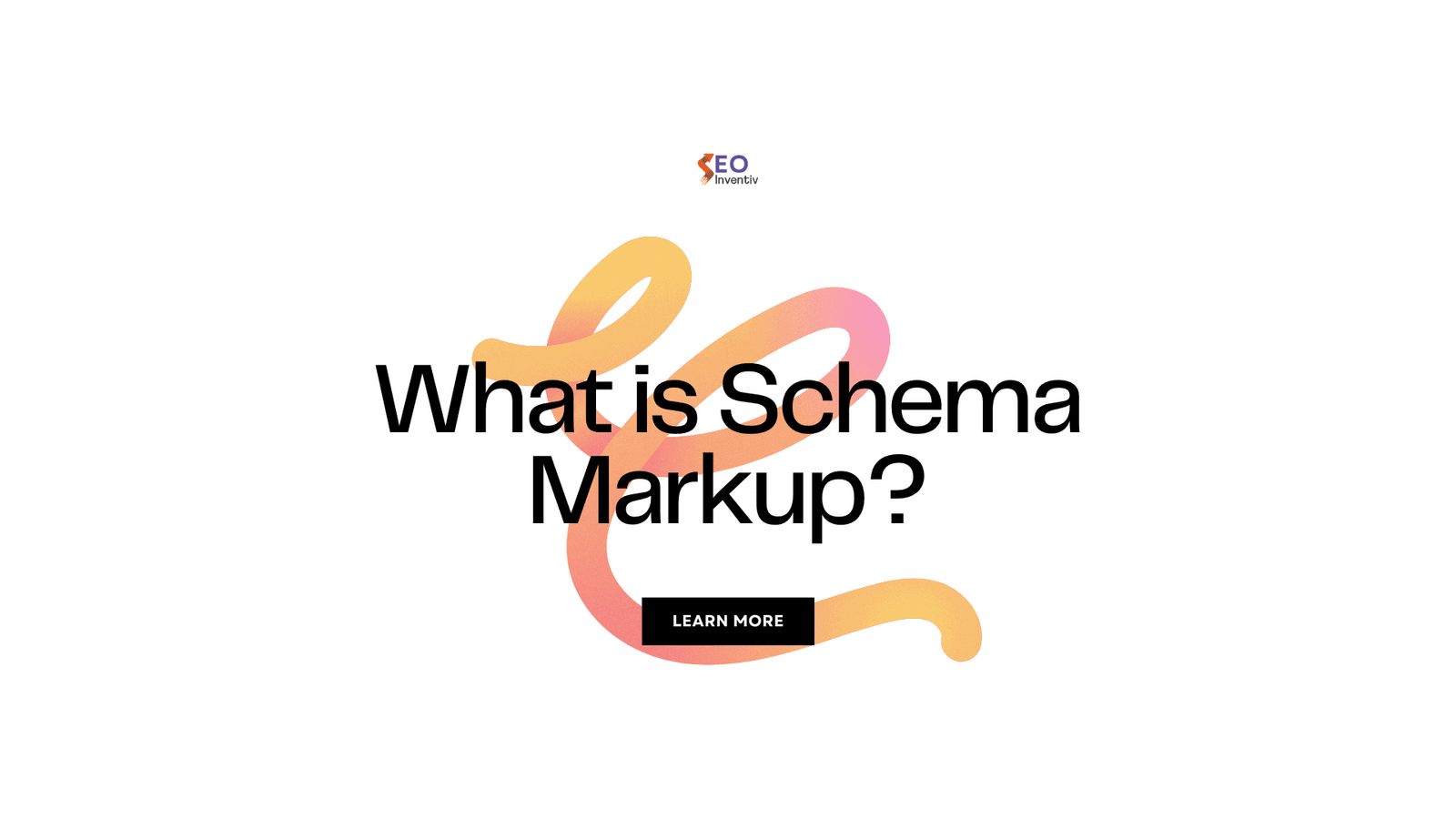
Ryan MacKeller had the best short and skinny definition of the schema, in my opinion:
“No matter how smart Google is, it still fails to understand what a website is really about. That’s why there is a schema label. It’s a form of metadata added to the web that tells the algorithm what to draw and how to categorize it. In December 2017, Google launched an algorithm update that penalized sites without.”
In other words, schema tags clarify information for search engines so they can understand your content. This helps users provide better and more accurate information in the structured snippets below the page title.
Different Types of Schema Markup with Examples
There are over 100 types of schema markups because there are over 100 types of different searches. However, we will discuss a few of the important types of schema markup in this section today.
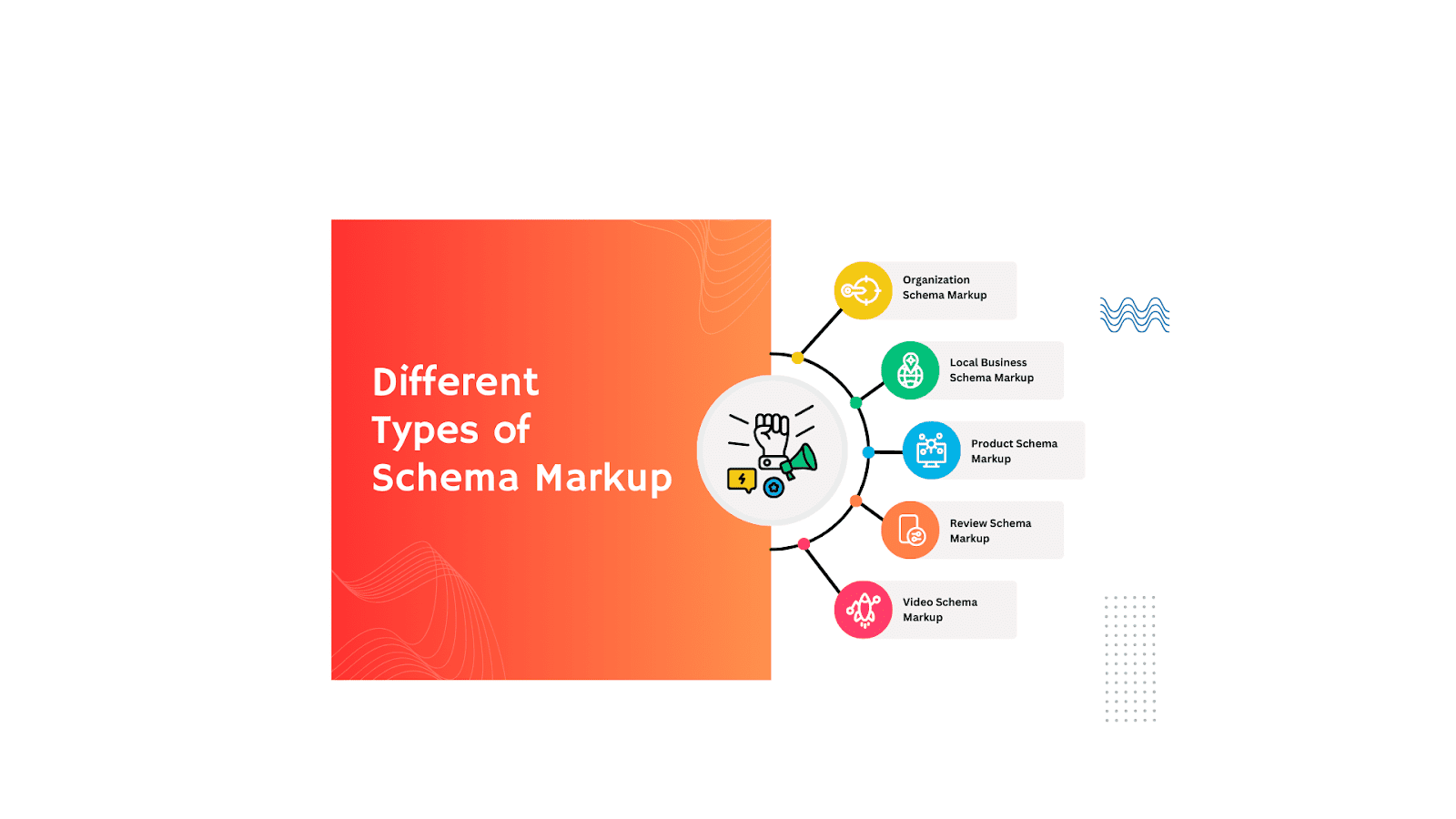
-
Organization Schema Markup
An organization schema markup is a type of structured data markup code that can be added to your business website to make it easier for search engines to identify what type of organization you are and what products or services you provide.
Schema markup was created for search engines to understand better and display data using common tag groups. Your business can benefit from schema markup as it can help you better optimize your site for local SEO – one of the deciding factors in how your content ranks in the SERPs.
Organization Schema Markup Example
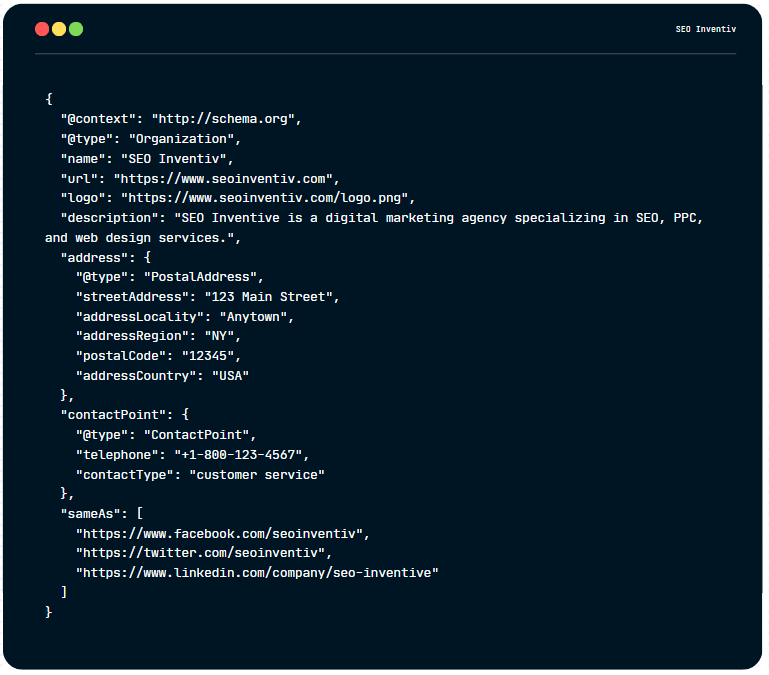
In the above JSON Organization Schema Markup Example,
- @context specifies the context for the schema, which is set to Schema.org, which indicates that this is a schema/org markup.
- @type specifies the type of entity that is being organized.
- Name is the name of the organization.
- Url is the organization’s website URL.
- The logo is for the organization’s logo
- The description provides a brief about the organization
- contactPoint specifies the contact details
- sameAs provides links to the organization’s social profiles.
Local Business Schema Markup
Local Business Schema Markup is a structure of markup data that can be added to your business website. Moreover, it makes it easier for search engines to identify the type of organization you are running and the types of services you are providing.
Local Business Schema Markup Example
Here, an example of a local business schema markup for a local food business named Burger Street is mentioned, which is the schema with no markup.
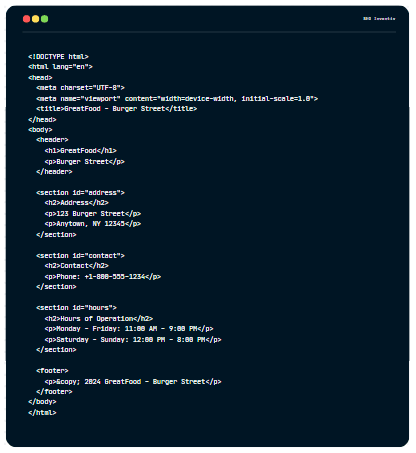
In the HTML code above, you can see the restaurant’s name (Burger Street), address, phone number, and hours of operation. You can see this information in the schema code in the example below from the same restaurant. This standard schema microdata format is the most common and easiest to implement.
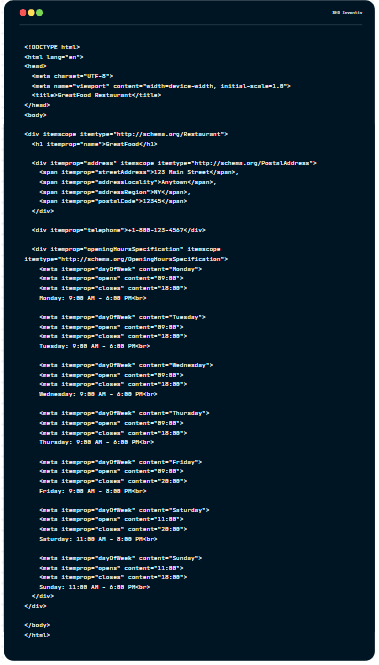
Below is the format you would use for the JSON-LD format that would be used for JavaScript.
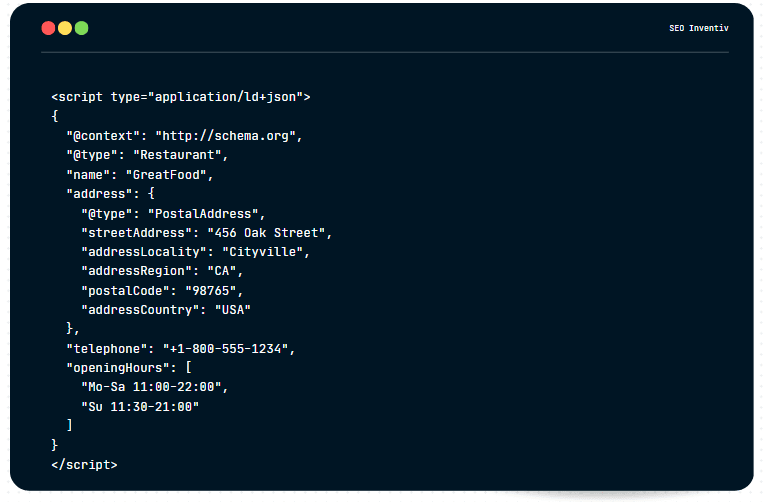
Finally, the example below is an RDFa format that works in various documents – including XML, HTML 4, SVG, and more.
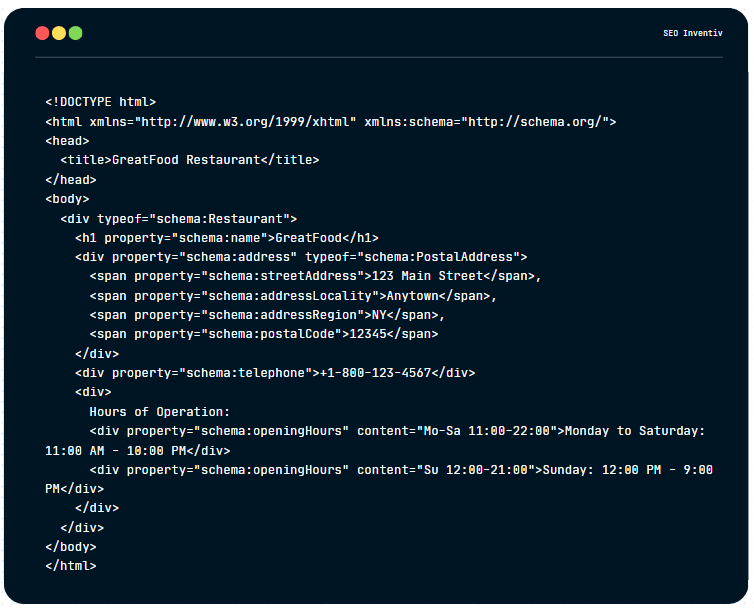
Incorporating a local business schema markup can seem complicated. However, suppose you know the category your business falls into and include important information such as name, address, phone number, and hours of operation. In that case, you can easily use the local business schema markup to boost your website in search engine results.
Product Schema Markup
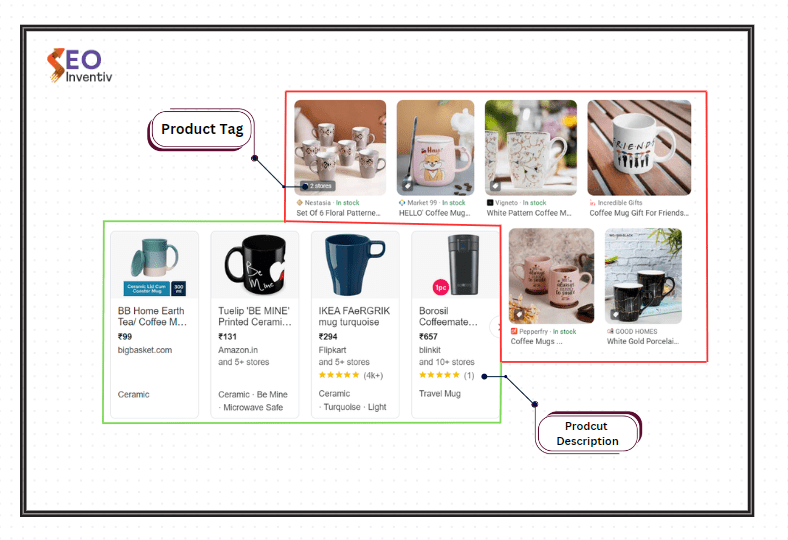
A product schema markup allows you to add specific product attributes to product listings that can appear as enhanced results on a search engine results page (SERP).
These features include:
- Price
- Review
- Evaluation
- Offers
- Product Description
- Valuation
- And more
Product Schema Markup Example
A product schema markup often returns an expanded result or a structured snippet in SERPs, as we see here in this example from Google:
These rich snippets grab attention and break through the noise of SERPs we see today.
Note that some image results show a “Product” tag in the lower left corner – this is another product schema markup example that makes it stand out in search results and can drive clicks and conversions.
Video Schema Markup
Video schema markup is code that helps search engines better understand and display your video content in search results.
- Adding a video schema markup to your website gives search engines more information about your videos. For example, title, description, thumbnail, video length, upload date, and more.
- Google uses this information to generate enhanced results.
Video Schema Markup Example
Schema markup for videos takes several different forms. But they all use the VideoObject schema as a base. The VideoObject schema is used to label your video and define its properties. It can also be formatted in JSON-LD or Microdata. JSON-LD is added to a <script> element that can be added anywhere on a web page. Microdata uses specific HTML tags to embed structured data directly into code. Google supports both. But it prefers JSON-LD, so that’s what we’ll focus on.
Here are some examples that show how your video’s appearance in search results changes based on the properties you used in the VideoObject schema.
Standard video

Here is an example of displaying a video using the standard VideoObject schema:
Here is the markup code that supports this snippet:
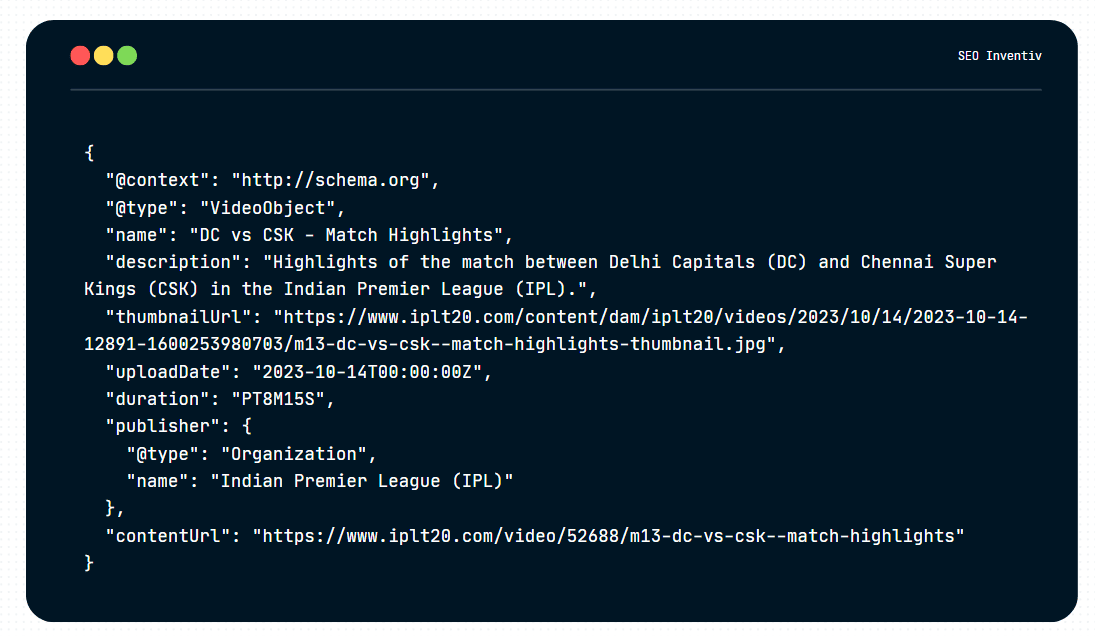
This helps Google display the video in a structured snippet, so the video is something else. Otherwise, the results differ from many videos.
Live-Streamed Video

You can watch live video using the Broadcast Event function, which indicates when a broadcast event occurs. Here — The code using the BroadcastEvent property looks like this:
The code looks like this:

You can use the tag for real-time events like animated news, shows, and sports. Google wants to call the Indexing API to access the beginning and end of live videos. Allows tags to appear instantly on video.
Video clips
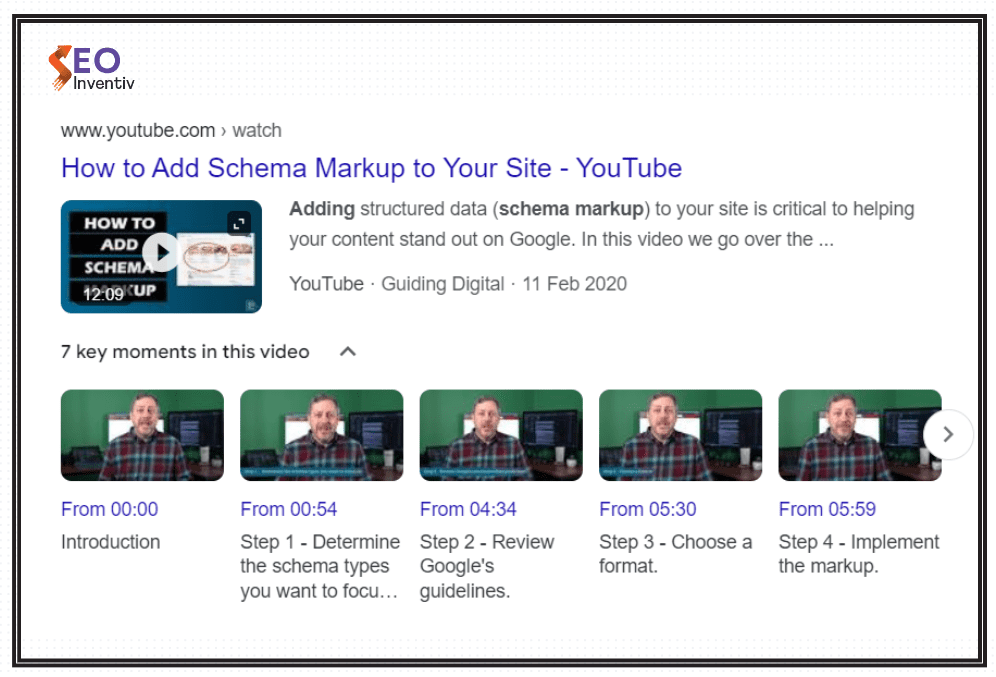
You can add video clips to highlight important moments in your videos. Google uses them to display timestamps and tags.
The result of a video using a video clip will appear in the search as follows:
This is the sample code:
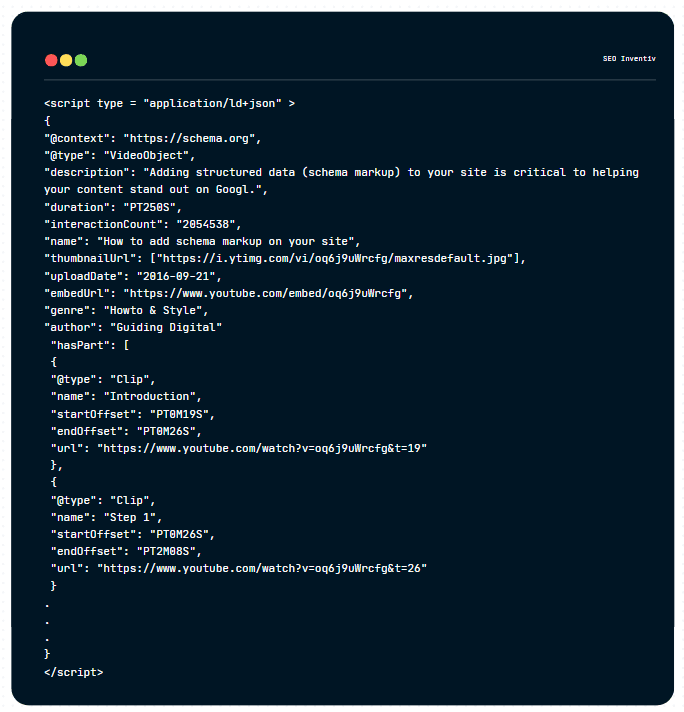
This will help users quickly access the video feature directly from Google.
Review Schema Markup
Review schema markup helps you mark up information on your site, like genuine user reviews, product ratings, and more.
When Google enters and analyzes this content, it selects a concept and uses this character to better understand the content of the page. It also uses this information to improve search results.
In short, using a review architecture will help you get listed in SERPs, give customers another reason to click on your brand, and build trust and confidence in your brand and products.
The review concept allows you to display ratings and reviews on SERPs and local directories. This lets potential customers learn more about your product, service, or business right on the SERPs.
Review Schema Markup Example
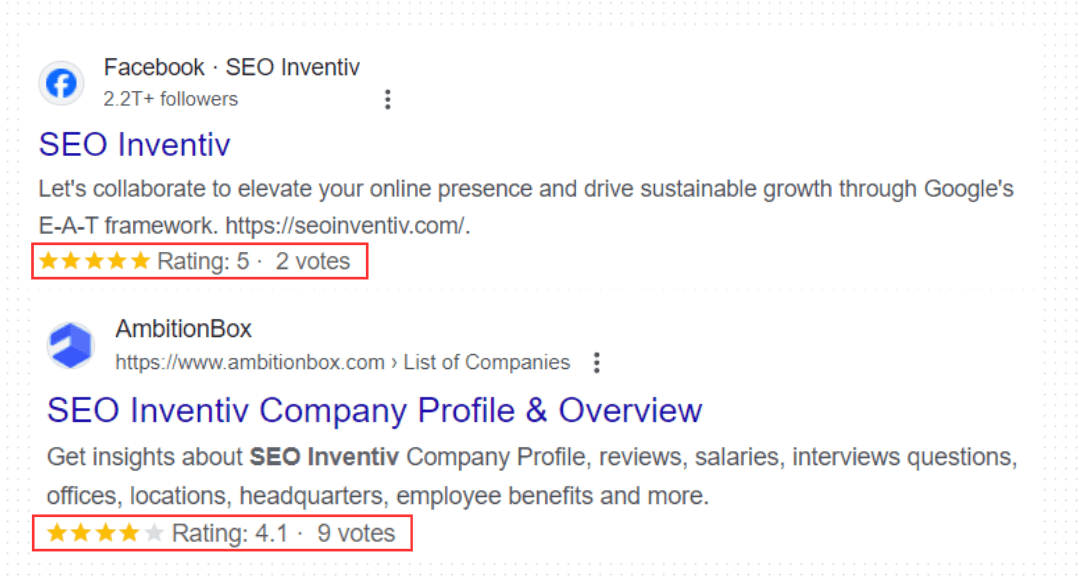
Structured marking can also help you improve your skills. Google extracts information from the page markup. So, if Google chooses to display ratings and reviews here, it will remove them from your review schema markup.
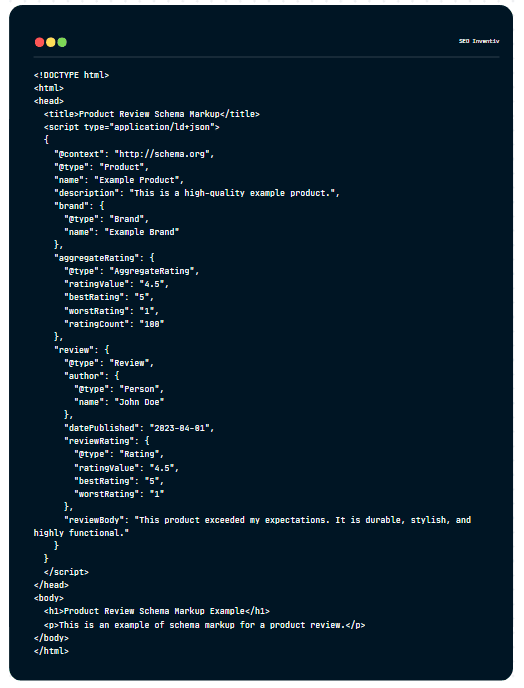
What Is The Recommended Format For Implementing Schema Markup?
JSON-LD: Preferred Format
The recommended and accepted format for using schema markup is JSON-LD (JavaScript Object Notation for Linked Data). JSON-LD is a lightweight, human-readable, and machine-understandable format that has become the industry standard for document formats. It has many advantages over other formats, such as Microdata and RDFa, making it the first choice of web developers and SEO professionals.
What is a Schema Markup Validator?
Schema Markup Validator is a tool used to validate all Schema.org structured data embedded in a web page. Schema Markup Validator replaces Google’s Structured Data Testing Tool (SDTT). Google originally intended the Extended Results Testing Tool to replace SDTT. However, Google has seen resistance to this change. Finally, they incorporated Schema Markup Validator into Schema.org to support SEO in testing their structured data.
All You Need to Know About WordPress Schema Markup
Now that you know what schema markup is, it is time to learn how to implement WordPress schema markup. There are two ways to implement WordPress schema markup; one consists of the manual way and the other consists of schema markup WordPress plugin. Let us learn both ways.
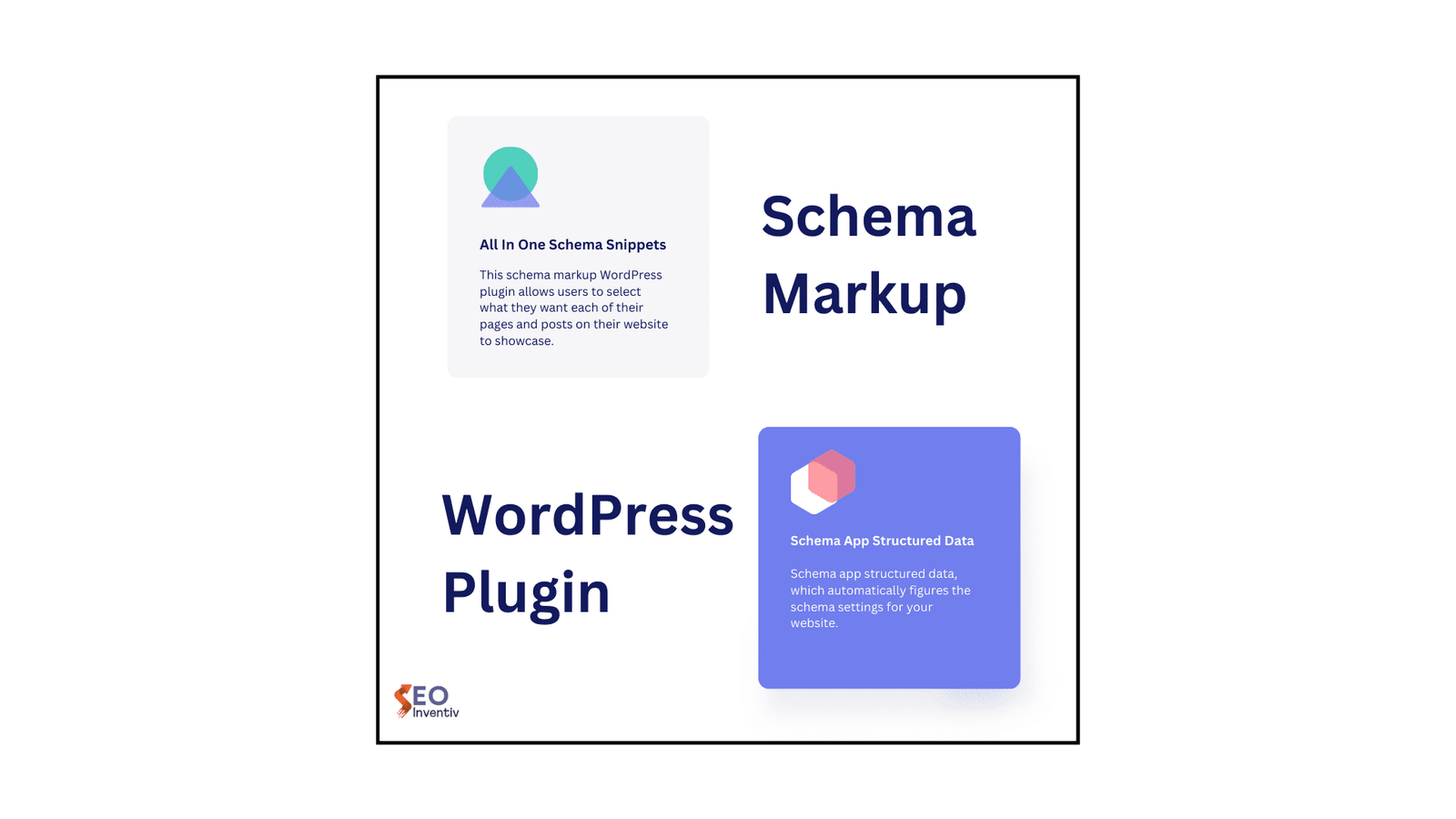
Schema Markup WordPress Plugin
Using a schema markup WordPress plugin, you can implement Schema markup on your WordPress website. It is one of the easiest options to help you create rich meta tags and descriptions. A few of the schema markup WordPress plugins are listed below.
This schema markup WordPress plugin allows users to select what they want each of their pages and posts on their website to showcase. Moreover, it helps you represent your pages in a more structured format to the search engines.
The next schema markup wordpress plugin is schema app structured data, which automatically figures the schema settings for your website. This includes high-level settings such as logo address, company type, etc.
Add Schema Markup Manually in WordPress
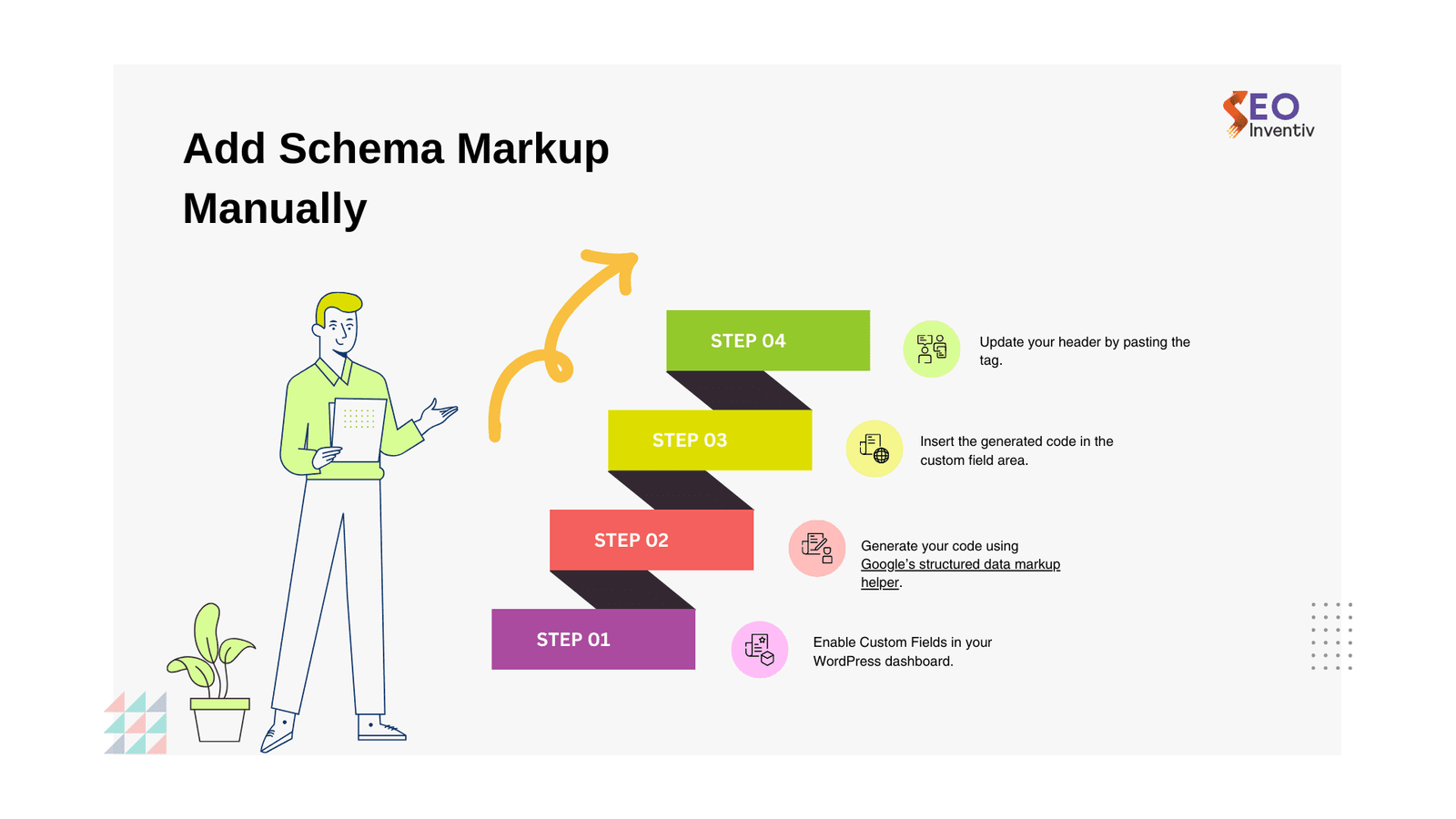
Step 1: Enable Custom Fields in your WordPress dashboard.
Step 2: Generate your code using Google’s structured data markup helper.
Step 3: Insert the generated code in the custom field area.
Step 4: Update your header by pasting the tag.
Conclusion
According to a study rolled out by Bing in 2017, only 17% of businesses with online presence use schema markup. If you too are from a group that is still wondering or is not yet aware of schema markup, then it’s time to take a long jump of faith. Implement Schema Markup on your website as soon as possible and increase your chances of overtaking your competitor’s Google SERP rankings.
Need Help With Schema Markup? Talk to SEO Inventiv.



2 Replies to “What Is Schema Markup? How To Use It For SEO In 2024”
I truly relished the effort you’ve put in here. The sketch is stylish, your authored material chic, however, you seem to have developed some anxiety about what you intend to deliver subsequently. Assuredly, I will revisit more regularly, akin to I have nearly all the time, in the event you maintain this rise.
This website has quickly become my go-to source for [topic]. The content is consistently top-notch, covering diverse angles with clarity and expertise. I’m constantly recommending it to colleagues and friends. Keep inspiring us!